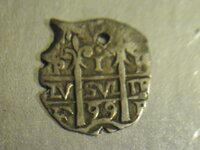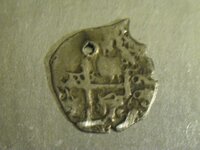treasurehuntr2
Jr. Member
Howdy fellow treasure hunters. Just found this in a box of old stuff gathered up at a place being demolished  Anyone have any idea what it is? Thanks.Th2
Anyone have any idea what it is? Thanks.Th2
 Anyone have any idea what it is? Thanks.Th2
Anyone have any idea what it is? Thanks.Th2



 It seems the only sure way of knowing if a cob is a fake, from a picture, is to find a match because no 2 are alike.
It seems the only sure way of knowing if a cob is a fake, from a picture, is to find a match because no 2 are alike.



